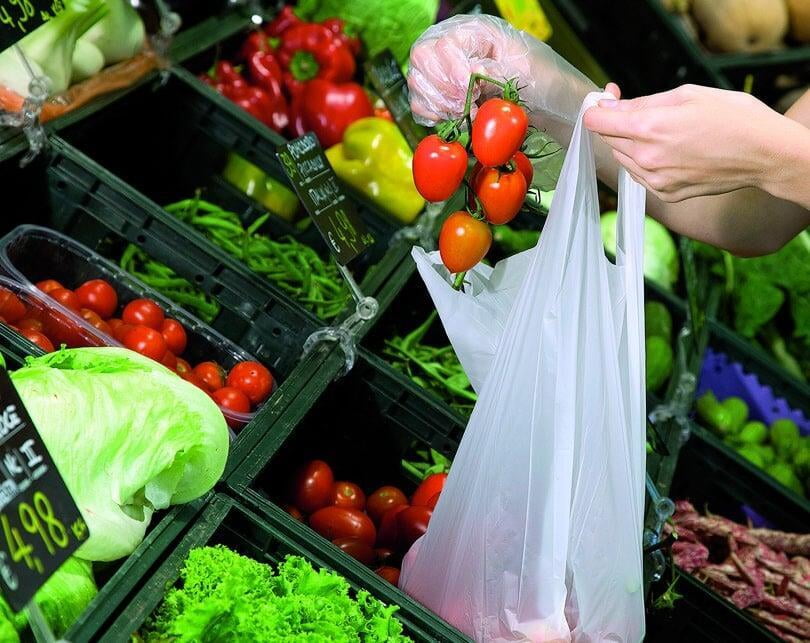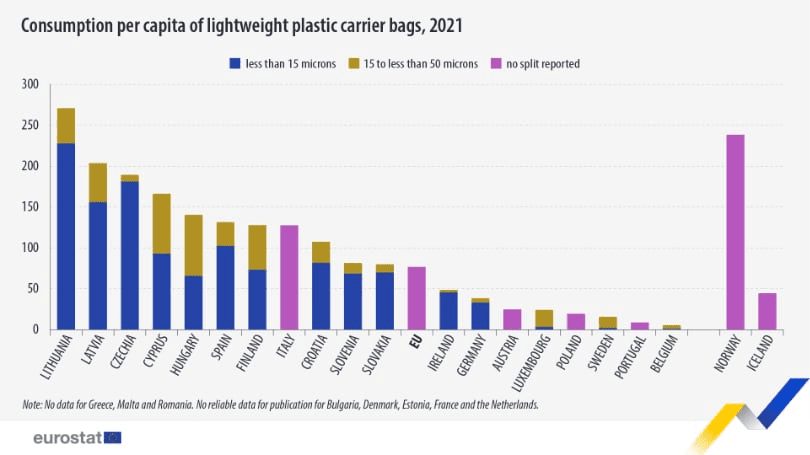A report released by Eurostat shows that consumption of lightweight plastic bags (thicknesses from 15 microns to 50 microns) continues to decline in Europe in 2021, the first year in which the reduction also affects ultra-lightweight plastic bags with a thickness of less than 15 microns.

According to data provided by Eurostat, 34.2 billion lightweight plastic bags were used in 2021, 4.8 billion fewer than in the previous year, with a per capita consumption of 77 disposable bags. According to national statistics, consumption of ultra-lightweight plastic bags was 12.3 billion, down from 14.1 billion in 2018.
The EU average of 77 bags exceeds the target set by the EU of no more than 40 per capita to be achieved by December 31, 2025 (EU Directive 2015/720), excluding ultra-lightweight plastic bags. There are only a handful of countries below this threshold, including Belgium (5 bags per capita), Portugal (9) and Sweden (16).
Italy exceeded the line of 100 bags per capita, although they did not provide data split by thickness, which could bring this figure down. Among the countries with the highest per capita bag consumption, Lithuania (271), Latvia (204) and the Czech Republic (189) accounted for most of the consumption of ultra-lightweight bags.

However, Eurostat warns that these data may be affected to some extent by the different calculation methods used by member States.
EU Directive on bio-based plastic bags 2015/720
Following a national ban on plastic shopping bags (excluding produce bags) in 2011, Italy adopted EU Directive 2015/720.In order to reduce the consumption of plastic bags, the adoption of the directive means that all single-use produce bags distributed in Italy must be compostable and contain a percentage of biobased carbon that will gradually increase.
Manufacturers of bioplastic bags must certify their products according to UNI CEN/TS 16640 Percent biobased: biobased carbon as a proportion of total carbon (now known as EN 16640:2017). The law also provides for information campaigns aimed at raising consumer awareness of the environmental impact of plastic bags and "refuting the misconception that plastic is a harmless and inexpensive material, contributing to a reduction in the use of plastic bags".
Although there is still a gap with the 2025 target, shoppers are becoming more environmentally conscious, consumption of plastics is gradually decreasing and the market for bio-based plastic bags is booming.

